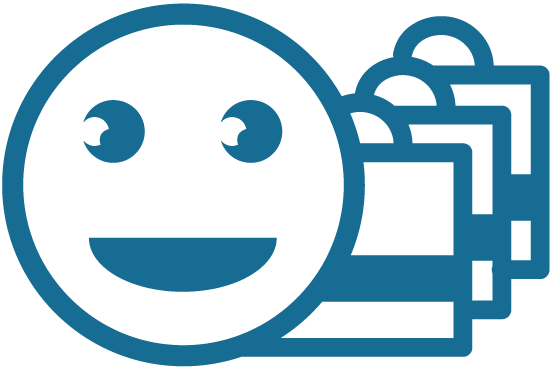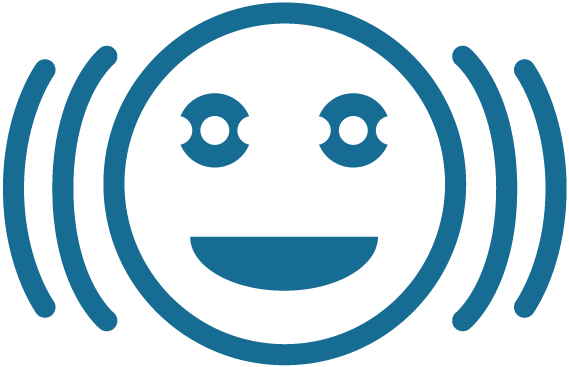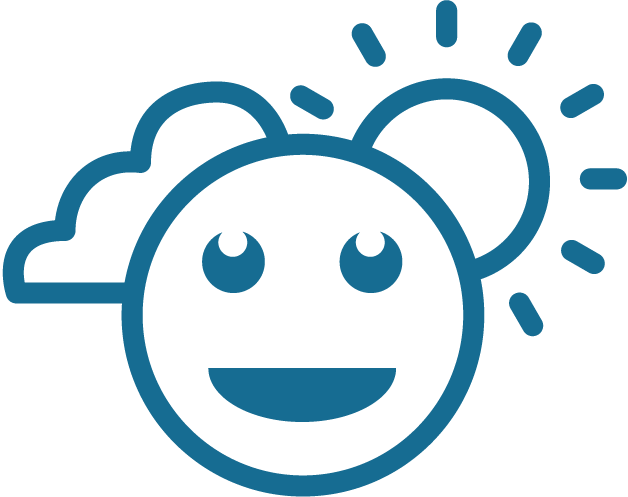This week we’re chatting with roboboogie’s Social Media Coordinator, Etain O’Longaigh. Etain wrangles all of roboboogie’s social channels, and makes sure we’re posting relevant content that resonates with our followers. She also spends hours everyday engaging with the social community. How does she do it? Read on to learn more about what social media means to roboboogie, accounts we love, and where the industry is headed.
How do you describe what you do?
I am a Social Media Coordinator: wizard of social strategy & content promotion. From curating content that supports our optimization strategies to engaging with fellow digital marketing accounts, I translate our optimization world for our social media followers. My role can be broken down into four main areas involving content: content optimization, content design, content strategy and content translation.
Content optimization involves the process of selecting photos, articles and blog posts that are relevant to our particular field and directly connect with our practices. I utilize social media analytics to determine which areas of content are connecting with followers, and curate research around our social media practices. Analytics are particularly interesting to explore with social media, especially audience metrics!
Content design is a critical part of the visual aspect of social media. From taking photos of events and everyday office life to maintaining a constant design theme on social media accounts, the visual aesthetic aspect of social media shapes the brand. My favorite part of content designing is creating visual themes to match our brand!
Content strategy is a critical aspect of every social media coordinator’s position in a company. I have to select meaningful content to share, engage our audiences, and craft meaningful messages to our followers. For example, I created the #happycustomersconvert campaign to align with our presence at Opticon 2017. I wanted to create a social campaign that reflected our belief as an agency that creating memorable and personal customer experiences is paramount to increasing conversion rates. Accompanied by some fun face coasters and matching t-shirts, #happycustomersconvert expressed an agency strategy with a fun social tone!
Content translation is the most important role that I play in social media. Our agency operates in a unique digital and design sphere that can be foreign to many of our followers. My role is to translate and interpret our practices in a easy to understand manner for our audience. From highlighting new tech practices that our team is excited about to promoting work we’ve done with our clients, content translation bridges the gap between the world of optimization tech and our audience of marketing professionals.
What is a skill set that you use every day, but never thought you would have to?
Being a professional translator between the world of technology and experimentation into the world of tweets and Instagram posts was a skill set that I was surprised was so necessary for working in tech marketing. My role as a social media coordinator is to provide content that is valuable and meaningful for our followers. Therefore, in order to share what we think is exciting in experimentation and testing, I must be able to translate technical terms and practices into a form that is accessible to our followers. I have to be adept with the basic knowledge for each practice of our agency, without necessarily being involved in that area.
I was surprised about how many different development terms I was learning while explaining our experimentation process in tweets and article posts. Being able to translate our agency’s process into social posts is a fun but challenging process!
What are five twitter accounts everyone should follow to keep up to date on optimization, experimentation and personalization?
How do you decide what content to share with roboboogie’s followers?
The most important thing I keep in mind when curating social content is showing off what makes our agency tick. From integrating different office interests, such as exploring Oregon’s best hikes to trying out the latest coffee shops, I try to present a clear picture of the brand culture associated with our team. We are a true Portland agency: obsessed with good work, good times, and good fun.
I also enjoy sharing our latest projects, or tech topics that we’ve been diving into, in order to help our followers understand more about our digital world. From sharing our latest tech terms with “Word of the Week,” to illustrating the behind-the-scenes design and planning process for our team, I try to make our social channels reminiscent of our everyday process as a team. If we are excited about a new trend in the experimentation industry- you can bet that our social channels will be sharing our opinions about it.
What trends in the experimentation industry are currently most excited by?
As someone who is constantly looking for ways to integrate personalization into our social media strategy, the rise of artificial intelligence in the customer experience world is fascinating. I am excited about the ways that AI can help improve the bridge between brand communications and customer needs. The integration between Voice AI and customer shopping experiences has been interesting to watch. I think that AI can be applied in so many different ways to the world of social media. I’m excited to see if we can start searching for picture inspiration on Instagram or tweeting during a marketing event by talking into our phones!
Thanks for sharing your thoughts on all things social media, Etain! Stay tuned next month for another interview with a roboboogie pro.







